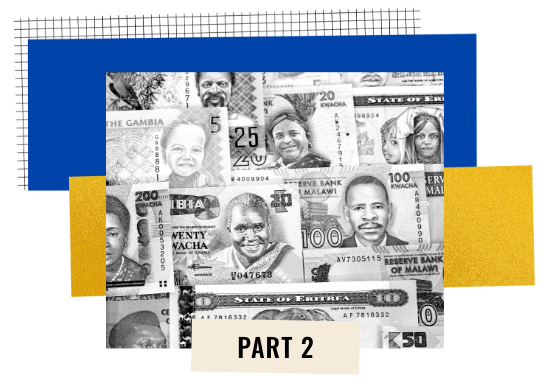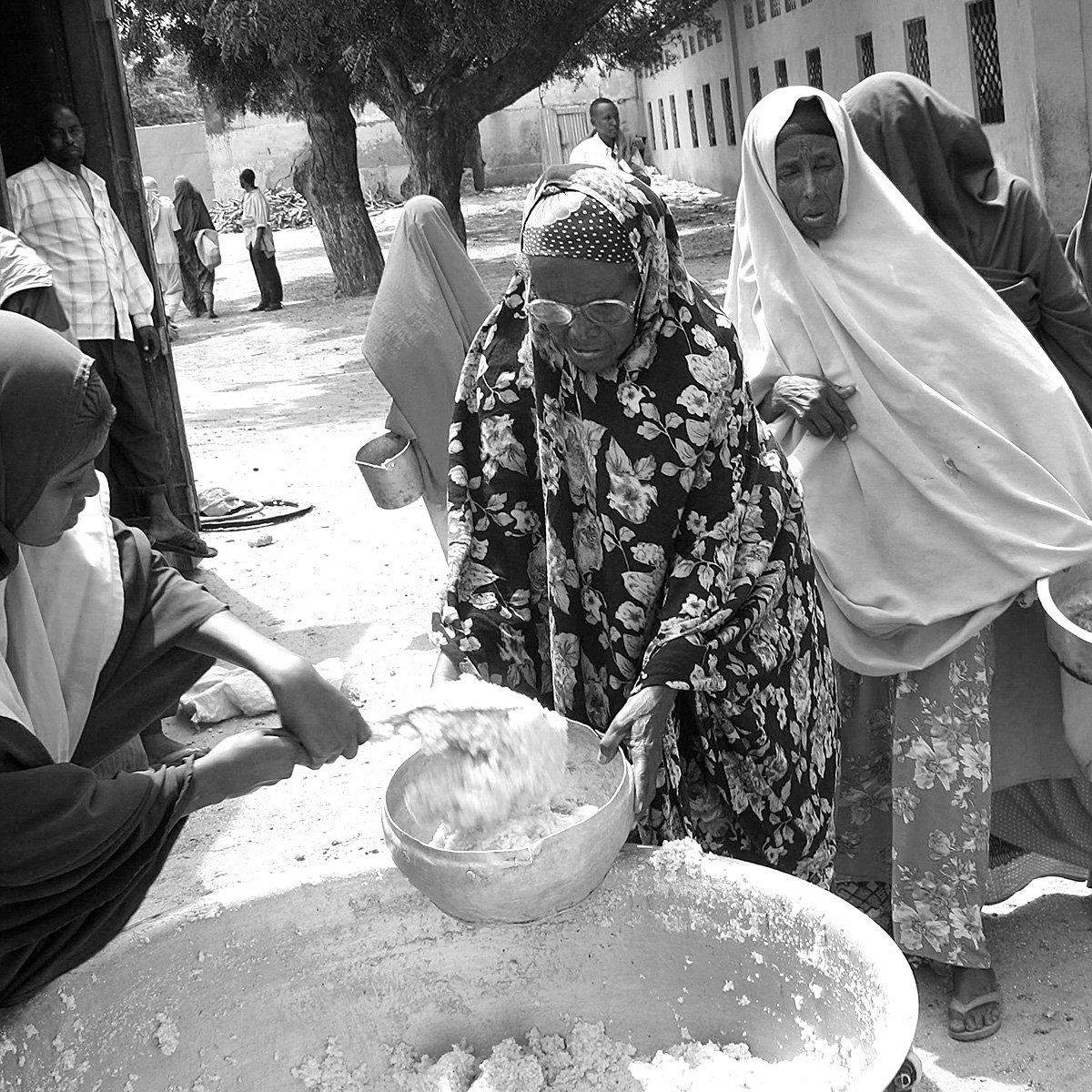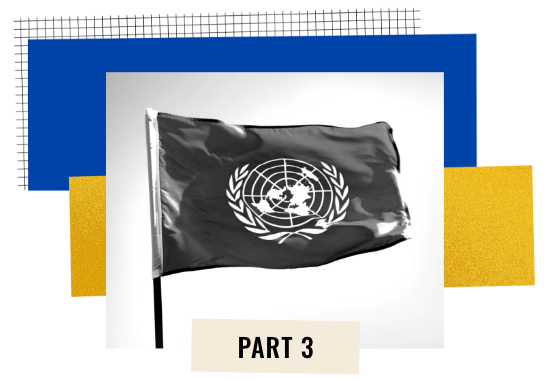Revitalizing Multilateralism in the Face of Compounding Global Crises
Multilateral action is critical to address global food, fuel, and finance challenges exacerbated by Russia’s invasion of Ukraine
By FP Analytics, with support from The Open Society Foundations
Russia’s invasion of Ukraine revealed the limits of the United Nations and other multilateral institutions to constrain acts of aggression and cohesively respond to the compounding security, environmental, and socioeconomic challenges facing the world. Volatility in commodity prices brought on by the COVID-19 pandemic and the invasion of Ukraine poses an immediate threat to human security and economic stability, exacerbating poverty and intensifying humanitarian emergencies across the globe. In the face of this volatility, international organizations have struggled to respond to rising food, energy, and debt risks.
The failure of global multilateral institutions to address the current global crisis is not unique. The international system has proven increasingly ineffective at managing the wide-ranging impacts of complex crises brought on by conflict, climate change, as well as persistent multidimensional security threats. Over recent decades, low-income countries have amassed significant debt burdens while struggling to transition energy away from fossil fuel sources. Meanwhile, communities across much of the globe are contending with energy poverty and steady increases in food insecurity amidst widening inequality. Multilateral institutions achieved little progress in coordinating meaningful global action to address these trends, allowing them to coalesce into prolonged and evolving crises. Russia’s full-blown invasion of Ukraine in February 2022 was launched against this backdrop. This issue brief assesses the cascading global, economic, humanitarian, and political effects, highlighting potential pathways for multilateral institutions to respond more effectively to existing and emerging crises and to strengthen global resilience to withstand and overcome future shocks.

Rapid Inflation Further Risks Food and Energy Security
The war in Ukraine dealt a severe blow to the global economy, disrupting the trade of key goods and aggravating existing pandemic- and climate-related stress in global commodity markets. Food, fertilizer, and energy markets are particularly affected, driving up inflation and lowering standards of living across the globe. The United Nations (UN) has established the Global Crisis Response Group on Food, Energy, and Finance (GCRG) to coordinate a multilateral response to the global cost-of-living crisis, yet efforts arising from the GCRG have so far proven limited in scope and impact.
Although Russia and Ukraine contribute a relatively small share to total world trade and global economic output, both countries are key global suppliers of food staples, fossil fuels, and fertilizers. In 2019, Russia and Ukraine supplied roughly a quarter of the world’s wheat, 15 percent of the world’s barley, and 45 percent world’s sunflower oil. Billions across the world rely on these food staples. Additionally, Russia is the world’s leading exporter of natural gas, the world’s second-largest exporter of crude oil, and an important global supplier of chemical fertilizers.
Supply Chain Disruptions Have Led to Skyrocketing Prices for Food, Fossil Fuels, and Fertilizers
World Bank Indices for Food, Energy, and Fertilizers since 2018, Nominal USD (2010=100)
According to a poll conducted in mid-2022 by the Open Society Foundations, 49 percent of respondents across 22 countries listed the cost of living and inflation as a key challenge currently facing their families and communities. While respondents in advanced economies were more likely to note inflation as an important global challenge, developing economies are most vulnerable to the higher food and energy costs brought on by the war, as people in those countries tend to spend a larger fraction of their incomes on basic necessities, compared to those in advanced economies. As a result, anticipated spillovers from the war in Ukraine led the International Monetary Fund to increase its inflation projections to 6.6 percent in advanced economies and 9.5 percent in emerging and developing economies. Inflation during the first three months of the war pushed an estimated 71 million people into poverty globally. This development followed the sharp rise in poverty, including extreme poverty, since the start of the COVID-19 pandemic.
Expensive food and fertilizer threaten immediate and longer-term food insecurity
Global hunger and malnutrition have been steadily growing for years, accelerating recently as the prices of food and fertilizer significantly increase. Before Russia’s invasion of Ukraine in 2022, hunger reached record highs during the pandemic, with 828 million people facing hunger globally due to an increased prevalence of armed conflict, worsening climate change, and government measures such as lockdowns to limit the spread of COVID-19. Across the 81 least-developed and developing countries served by the World Food Programme, the price-related impacts of the war in Ukraine are expected to augment acute hunger by 47 million people–a 17 percent jump from 2021. Hunger is a particular challenge in low-income countries, where food accounts for an average of 44 percent of consumption, compared with 28 percent in emerging market economies and 16 percent in advanced economies. Forced to spend more on food, vulnerable households tend to adapt by purchasing less-nutritious food, eating less, and reducing essential non-food expenditures such as health.
Beyond these immediate impacts on hunger and malnutrition, high fertilizer prices threaten to further perpetuate food insecurity into 2023. Disruptions in Russian fertilizer supplies are a key factor driving fertilizer prices upward. In 2021, Russia was responsible for nearly a fifth of global fertilizer exports, but its fertilizer exports fell by nearly 24 percent on the year in June 2022. High energy prices also contribute to soaring fertilizer prices, as nitrogen-based fertilizers are byproducts of natural gas production.
Rising food and fertilizer prices alongside accelerating climate change impacts such as prolonged droughts are compounding food insecurity in Africa, where 35 countries import food, and 22 import fertilizer from Ukraine or Russia or both. The African Development Bank (AfDB) reported that Africa lacks 2 million tons of fertilizer. If this deficit is not made up, food production in Africa is projected to decline by at least 20 percent, accounting for a loss of more than $11 billion in food production value. For countries located in the Horn of Africa, food production will be hit doubly by high fertilizer prices and drought.
To address rising food and fertilizer prices, the United Nationsfacilitatedthe Black Sea Initiative, a deal between Ukraine and Russia, to open Ukrainian ports in Odesa, Chornomorsk, and Yuzhne to facilitate the export of commercial grain, foodstuffs, and fertilizers. Despite the continuation of the war, exports beginning in August 2022 appear to be alleviating high wheat prices, though food prices generally remain above pre-pandemic levels. High food prices are expected to persist through 2022 and into 2023 if food and fertilizer trade remains disrupted by the conflict and export restrictions in 24 countries.
Rising energy costs contribute to global poverty and could delay a green transition
Rising fossil fuel prices tied to Russia's invasion of Ukraine and the COVID-19 pandemic are driving an energy crisis that threatens to derail climate action and significantly hinder energy access. High fossil fuel prices and the urgent need to meet current energy demands may drive further investments in fossil fuels, placing countries on the path to a high-emission, high-cost energy future that contradicts the roadmap of the Paris Climate Agreement. As renewables continue to prove more affordable and comparatively less susceptible to geopolitical risks, the current energy crisis offers governments an opportunity to redouble efforts to shift investments away from fossil fuels and toward renewable energy sources.
To ease current global energy prices, the International Energy Agency (IEA), an intergovernmental organization with 31 member countries, facilitated the collective release of 182.7 million barrels of emergency oil stocks from members in April 2022. Although the price of crude oil recently dipped below $90 a barrel, energy prices remain well above pre-Ukraine war levels, and the prices of coal and natural gas continue to rise. Europe is particularly vulnerable to high energy prices due to the region’s dependence on Russia for coal and natural gas, which have been subject to trade restrictions and supply stoppages since the start of the war. Prices for natural gas in Europe have increased by nearly 400 percent since January 2022 and are expected to increase further, as energy demand rises in the winter, and the deliveries of natural gas from Russia’s Nord Stream pipeline end. The recent surge in fuel prices is estimated to raise the cost of living in Europe by 7 percent in 2022, and there are growing concerns about an impending energy crisis stemming from inadequate supply. Amid cuts to natural gas supplies from Russia, European governments are expected to spend at least $50 billion on new and expanded fossil fuel infrastructure and supplies, including coal to power formerly closed plants. These temporary European investments in fossil fuels may address the immediate energy crisis but result in lower investments in renewables, higher emissions, and missed milestones in Europe’s planned energy transition away from fossil fuels.
Beyond Europe, volatile energy prices are exacerbating energy poverty globally and undermining recent progress to expand energy access to all. Higher prices for energy are requiring consumers to spend more on energy. With winter quickly approaching in the northern hemisphere, many households face the prospect of being unable to adequately heat homes, while across the southern hemisphere in low- and middle-income countries, high energy prices and inadequate supply are leading to nationwide power outages and reduced energy access at the household level. The World Bank expects COVID-related energy price hikes to leave 670 million without electricity by 2030–10 million more than projected last year. Some developing economies with well-developed electrical grids, such as Bangladesh, are cutting access to power in efforts to manage supply challenges. These outages have led schools, banks, businesses, and government offices to cut working hours, potentially resulting in lost opportunities, reduced wages, and hampered economic output.
Higher fossil fuel costs are simultaneously pushing some countries, such as the United States and Nigeria, to invest in renewables. In 2020 and 2021, renewable energy sources, particularly solar, proved less costly than energy derived from fossil fuels. However, for Nigeria and other developing economies, achieving a cheaper, cleaner energy future will require greater access to sustained climate finance. The UN’s GCRG recently highlighted policies that governments can adopt to support energy access for vulnerable populations in the short-, medium-, and long-term, thereby improving energy efficiency, leveraging renewable energy sources, and expanding access to climate finance to facilitate a net-zero transition.

A Future Financial Crisis Looms as Debt Burdens on LICs Grow
Low-income and developing economies have taken on record levels of debt in order to shield their populations from COVID-related economic shocks and now surging food and energy prices related to the war in Ukraine and elsewhere. Between 2019 and 2021, average public debt levels in developing economies increasedfrom55.7 to 65.1 percent, as developing countries contended with the pandemic. During the decade preceding the pandemic, World Bank figures show that public debt increased by 18 percent of GDP, on average, across a sample of 65 developing countries. Ukraine war-related supply chain shocks now place approximately 60 percent of low-income and 30 percent of middle-income countries in debt distress or at a high risk of entering debt distress. International financial institutions and multilateral development banks as well as the G7 and G20 countries will be key players in addressing the unsustainable debt burdens of developing economies. Such efforts will be critical to tackling the current cost-of-living crisis and ensuring a climate-resilient future for many countries globally.
Low-Income and Developing Countries’ Risk of Debt Distress August 2022
Sixty percent of LICs are in debt distress or at a high risk of debt distress
Source: IMF
Despite a recent fall in commodity prices, financial conditions in developing economies are worsening. Higher interest rates adopted by the United States and other advanced economies to contend with rampant inflation are eroding the buying power of developing economies’ currencies. Between January and July of 2022, developing countries’ currencies depreciated by 5.1 percent against the U.S. dollar. As a result, the cost of living in countries that import food and energy has increased substantially. Additionally, the cost of servicing debt denominated in a stronger foreign currency has increased substantially. In 2022, emerging economies are estimated to require $311 billion to service public external debt, a figure that amounts to 13.6 percent of government revenues. These financial conditions are eroding the fiscal and monetary space of low- and middle-income countries, limiting their ability to utilize public revenues or borrow to address current and future crises.
The international community has pursued a number of initiatives since the start of the pandemic in order to avoid a global debt crisis. Between May 2020 and December 2021, $12.9 billion in payments on debts owed by 73 low-income countries was suspended under the G20’s Debt Service Suspension Initiative (DSSI). The G20, along with the Paris Club of sovereign creditors, also created the Common Framework for Debt Treatments to help DSSI countries restructure their debt and manage insolvency. However, only three countries—Chad, Ethiopia, and Zambia—have submitted requests for debt relief under the Common Framework, though five other countries are in debt distress. Zambia became the first country to restructure debt under the Common framework, but the process was lengthy due to the level of coordination among creditors necessary to reach the agreement.
In August 2021, the International Monetary Fund approved a record issuance of $650 billion reserve assets known as “special drawing rights” (SDRs) to provide debt relief to developing countries for crisis-era loans. As SDRs are distributed according to country shares of the IMF, a significant portion of SDRs belong to advanced economies. But of the 105 countries that have used their SDRs, 104 were low- and middle-income countries. At least 30 of these countries have used 90 percent or more of their SDRs. Given the ongoing threat of a debt crisis, the IMF has urged wealthy nations to redirect SDR allocations to needy countries rather than release additional SDR allocations. Eleven nations have so far committed to redirecting their resources to less-developed countries. Unless further multilateral action is undertaken to address potential liquidity pressures and increase fiscal space, developing economies’ capacity to meet current debt and humanitarian obligations while financing development and climate resilience may prove an insurmountable challenge.
Inflation and Debt Impacts on Select Countries
The effects of the war in Ukraine have been unevenly distributed throughout the world, made all the more acute by the prolonged impacts of COVID-19 and accelerating threats of climate change. Addressing these compounding crises is imperative to prevent a full-scale global food and financial crisis, widespread civil unrest, and even greater humanitarian catastrophe.

Somalia
Prior to Russia’s invasion of Ukraine, 92 percent of grain imported by Somalia was sourced from Russia and Ukraine. Somalia’s significant dependence on grain imports from both countries, coupled with rising fuel prices (which have increased the cost to transport food internationally), has increased food insecurity and malnourishment exponentially. Already plagued by severe drought, COVID-19, and political instability and civil unrest, the war in Ukraine has exacerbated an already catastrophic food crisis in Somalia. As communities are unable to access clean water and critical food supplies—generating an internal displacement crisis with families leaving their home in search of nutrition—the number of Somalians at risk of death by famine has increased by 160 percent, and 20 million people are predicted to be on the verge of starvation by September 2022. Somalia’s public health infrastructures, which have been depleted by the COVID-19 pandemic, have reached full capacity and cannot keep pace with the influx of patients who suffer from malnourishment and require critical care. Worsening the situation, the ongoing energy crisis in Somalia means that only one in four medical facilities can access stable electricity, and, as the cost of power has reached an unprecedented high, 67 percent of the population are unable to access electricity in their homes.While Somalia has been left most vulnerable following Russia’s invasion of Ukraine, the war in Europe has drawn millions of dollars of funding away from Somalia.
PHOTO: ABDURASHID ABDULLE/AFP VIA GETTY IMAGES

Pakistan
Pakistan has been severely affected by the downturn of wheat imports from both Russia and Ukraine, as well as the skyrocketing prices for liquid natural gas (LNG), which is a key energy source powering its economy. In 2020, Ukraine and Russia became the main suppliers of wheat to Pakistan, exporting 1.2 and 0.92 megatonnes of wheat, respectively, from 2020 to 2021. Russia’s blockade in the Black Sea is preventing critical grain exports from reaching Pakistan, where drought and the increased cost of fertilizer have created an estimated wheat shortfall of nearly 4 megatonnes for the 2022 harvest. In addition to food shortages, in June 2022, Pakistan failed to purchase sufficient imports of LNG for the upcoming month due to sharp price increases. The energy shortage forced blackouts throughout the summer months, while power demand soared amidst deadly heatwaves. As of July 2022, Pakistan’s trade deficit had increased 57 percent year-over-year to reach nearly $50 billion, while the value of the Pakistan rupee had decreased by more than 30 percent in the same time period. The plummeting value of the currency, mounting trade deficits, and the rising price of food and energy on the international market are making it increasingly difficult to import sufficient resources. As Pakistan faces mounting economic challenges and political upheaval, it also now faces an unprecedented environmental crisis—in September 2022, massive flooding left one-third of the country under water. Throughout these crises, Pakistan maintained ties with both the U.S. and Russia and abstained from voting on the UN Generally Assembly’s resolution for Russia to withdraw troops from Ukraine.
PHOTO: FAROOQ NAEEM/AFP VIA GETTY IMAGES

Tunisia
Tunisia remains the last democratic country from the 2011 Arab Spring movement, but a worsening economic situation is contributing to growing political volatility that could bolster authoritarianism. Already facing a debt burden of nearly 75 percent of GDP in 2020, Tunisia’s economy was severely impacted by the onset of the COVID-19 pandemic. From 2020 to 2022, Tunisia’s unemployment peaked at nearly 17 percent, while its debt burden rose to over 85 percent of GDP. At the same time, Tunisia experienced the highest death toll related to COVID-19 in Africa. As Tunisia has struggled to recover economically from the pandemic, Russia’s invasion of Ukraine has placed further strain on the country. Tunisia imports roughly 52 percent of its wheat from Russia and Ukraine. High inflationstemming from rising prices on fertilizer and fuel are posing steep financial challenges for the country with an already-high debt burden. The severity of the economic crisis has led to an increasingly authoritarian approach from President Kais Saied, as he has ignored constitutional restraints by dissolving the democratically elected parliament. Saied’s consolidation of power has sparked widespread protests, leading to further measures from the regime to suppress criticism and dissent. Amidst these twin economic and political crises, Tunisia has failed to secure the necessary economic support from the IMF and the wider international community. This has worsened a downward-spiraling economy and has emboldened anti-democratic leadership, which together threaten to reverse Tunisia’s progress over the last decade.
PHOTO: FATHI NASRI/AFP VIA GETTY IMAGES

Outlook for Multilateral Action and Opportunities for Reform
Alleviating the immediate cost-of-living crisis will require global action across a number of different international fora and potentially significant reforms to the multilateral system. Russia’s invasion of Ukraine heightened long-held fears that the multilateral system may not be fit to address global challenges that undermine peace, prosperity, and security. According to OSF’s latest report Fault Lines: Global Perspectives on a World in Crisis, respondents from 35 countries expressed dissatisfaction with global cooperation around climate change, poverty and hunger, and inflation, though 52 percent of respondents believed that countries responded well to the COVID-19 pandemic. Augmenting global cooperation and coordination will be fundamental to dealing with ongoing, multidimensional threats in a fragmented multilateral system across the UN, regional organizations, and international financial institutions. At the same time, there is a need to carefully assess where international organizations are most needed and best placed to foster solutions, and where responsibilities could be transferred to local actors as part of a global drive for capacity-building.
Bringing together leadership and experts from across the UN System, the GCRG has played a critical role in coordinating UN action to the crisis, generating analysis, and proposing policies and solutions to support multilateral and Member State decision-making. The first of its kind, this temporary platform was formed specifically to coordinate a response to the current food, debt, and energy crises and is perhaps the forerunner of the Emergency Platform reform proposed by UN Secretary-General António Guterres’ report, Our Common Agenda. The GCRG could herald future platforms aimed to bolster cohesive multilateral and multi-sector action during specific crises.
It is important to note that unlike the Emergency Platform proposed in Our Common Agenda, the GCRG lacks representation from the private sector, civil society, and nongovernmental organization representatives. Without this representation, gaps in international responses to the crisis may persist, especially considering the role of the private sector in supply chain disruptions and the provision of sovereign debt. Beyond future emergency platforms, expanding consultation and consideration to include nonstate actors in international governance can boost global capacity-building at the community-level, allowing international organizations and governments to prioritize policy and resource mobilization around global crises and challenges and local stakeholders to focus on service-delivery and program implementation.
The UN may seek to explore additional mechanisms and reforms to manage multidimensional security threats, such as those presented by the war in Ukraine and climate change. Traditionally, security-focused reform proposals center on the Security Council, the UN’s principal organ charged with ensuring international peace and security. As demonstrated most recently by the Ukraine crisis, upholding peace and security is often obstructed by the veto power held by the Council’s five permanent members (China, France, Russia, the United Kingdom, and the United States). Substantive Security Council reform—increasing membership or abolishing the veto—can only be achieved through an amendment to the United Nations Charter, which requires a successful vote of two-thirds of members of the General Assembly, including P5 members who are resistant to change. Indeed, reforming the Security Council is not merely a procedural matter but also highly political and consequently unlikely to succeed in the current polarized political climate. Without substantial reform to the Council, a broad range of responsibilities may be further shifted to other forums, such as the UN General Assembly, or regional organizations, such as the Organization for Security and Cooperation in Europe (OSCE) and the African Union (AU).
Despite various hurdles, reforms to the multilateral system that do not require amending the UN Charter are underway. Examples include the aforementioned GCRG and, more recently, the Black Sea Initiative under the good offices and mediation roles of the UN Secretary-General. Attempts to address the current crisis and pursue broader reform to the UN system are also being undertaken by the General Assembly, which is charged, alongside the Security Council, with responsibilities relating to the maintenance of international peace and security. In response to Russia’s use of its veto to block a Security Council resolution that demanded it end its attack on Ukraine, the UN General Assembly adopted a landmark resolution in April 2022, which allows the General Assembly to hold a debate when a member of the P5 exercises its veto power. The reform, though minor, also requires the vetoing member to submit a report explaining the use of its veto prior to the debate. Additional gaps in the Security Council’s response to Russia’s invasion of Ukraine may prompt the General Assembly to pursue other courses of action, including the establishment of a special investigative mechanism to address breaches in international law, including the crime of aggression as well as violations of international humanitarian law, perpetrated by Russia, drawing on existing approaches such as those relating to Syria, Sierra Leone, and Myanmar.
To alleviate the looming global economic challenges such as the spiking cost-of-living and growing inequality, the General Assembly and other international forums such as multilateral development banks could also consider the establishment of a Global Fund for Social Protection. The Fund, recommended in a report presented to the Human Rights Council in 2021, would enable low-income countries to close the financing gap and provide social protection floors for their populations, especially the most marginalized groups. The report suggests that the Fund could be resourced using unused SDRs or development assistance from advanced economies. Development assistance to finance such a program may have strong public support in countries with advanced economies. Per OSF’s poll, more than half of respondents in France, Germany, Great Britain, Japan, and the United States supported dedicating 2 percent of their national budget to a global solidarity fund to help those most in need, which could have significant impacts worldwide. There are also growing calls for effective governance mechanisms relating to global commons and global public goods, which could be facilitated, for example, through the establishment of a multilateral forum for coordinated, transparent, and sustainable stewardship.
Through the end of 2022, there will be a number of opportunities to galvanize action to explore the reforms proposed above in order to tackle the current compounding crises and strengthen multilateralism. These moments include the opening of the 77th General Assembly, the 2022 Annual Meetings of the International Monetary Fund (IMF) and the World Bank Group, the G20 Summit in Bali, and COP27. Discussions at these fora could also be key to framing the Summit of the Future, the Secretary-General’s forum to deliberate the vision for reform outlined in Our Common Agenda.
Acknowledgements
Illustration by Klawe Rzeczy for FP Analytics/Getty Images photos